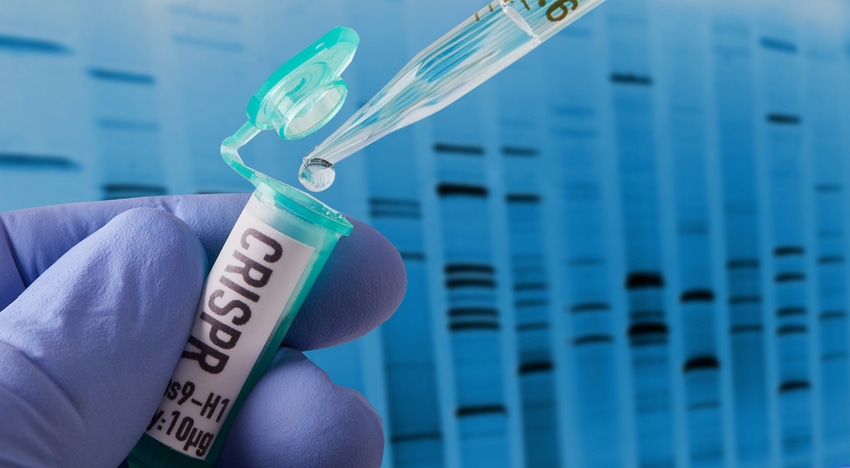
As an internationally recognized expert in the field of gene editing, Rodolphe Barrangou emphasizes that the knowledge of such groundbreaking technologies as CRISPR is only partial when it comes to plants as compared to the knowledge of gene editing in humans.
“We know hundreds of times less or thousands of times less about the genomics of plants than we know about human genetics,” says Barrangou, a professor in probiotics research at North Carolina State University and the co-founder of TreeCo, a new biotech forestry company.
Barrangou was part of a virtual panel examining the future of gene editing in agriculture. Joining Barrangou on the Feb. 17 webinar sponsored by AgLaunch, AgStart and the North Carolina Biotechnology Center were Fayaz Khazi, chief executive officer of Elo Life Systems; and Travis Frey, chief technology officer of Calyxt. All three stressed there is great untapped potential for gene editing in agriculture.
Barrangou said great strides are being made in gene editing in plants. He notes that in the last few years, advances in CRISPR technology have made the targeting of gene editing in plants much easier. CRISPR stands for Clustered Regularly Interspaced Short Palindromic Repeats which is a genome editing technology that targets specific stretches of genetic code and allows DNA editing at precise locations.
CRISPR and other gene editing technology is complicated for plants because there are many unknowns. In fact, Barrangou emphasized that the genotypes of plants are in many ways more diverse than the genetic complexity in humans which can be a barrier to gene editing in plants. He stressed big data and machine learning will “enable us to pick the winners ahead of time, but we are not there yet.”
Barrangou said it is critical to stress the “who” and “why” of gene editing rather than the “what” or the “how.” It is important to emphasize that scientists working in the field are consumers too and they are dedicating their careers to solving problems for consumers.
“The bigger question is the why. We’re not creating problems, we’re providing solutions. We’re not there to play God and have superiority complexes in academics. We’re trying to feed the world with more sustainable agriculture and solve climate change. Grand challenges to really be solved require us to deploy grand solutions and techniques,” Barrangou said.
“If it was easy and all it took was plant a few more crops here or plant a few trees there, we wouldn’t have the problems we have. We really need to harness the most powerful technologies we have,” he said.
In his comments, Khazi said gene editing will allow farmers to get more out of the crops they produce. He said the question should be “what more can crops do?”
“Is watermelon only a sweet red fruit or can it do more? Take genome editing beyond the knockout kind of solutions. Take a commodity crop and elevate that to a premium crop,” he said.
Frey said targeting is much easier now with gene editing technologies. Frey is the chief technology officer of Calyxt that uses its proprietary TALEN gene editing technology in plant and seed development.
“I still think at the end of the day it’s what targets you go after, and we’re still very early on in terms of understanding, It is more than being able to turn things on an off. It’s being able to understand the smaller gene effects that interact and regulate so you can get into more complex types of traits which is really where a lot of our partners are wanting us to go,” Frey explained.
“We have an opportunity to really leverage the full power of what plants have to offer. Plants have been giving us life for a very long time in terms of the way they support our ecosystems and they support us with food Everything is driven from that plant,” he said.
He made it clear that many companies still aren’t tapping into the full potential of gene editing in plants. He said the technology presents great potential in the development of such products as renewable plastics, packaging, and even advanced materials.
“There is a lot of potential for different plant materials to be used in different ways than they are currently being used. Allowing plants to see their full potential is something we want to enable. TALEN is one of those tools we are refining to help us do that,” he said.
About the Author(s)
You May Also Like






